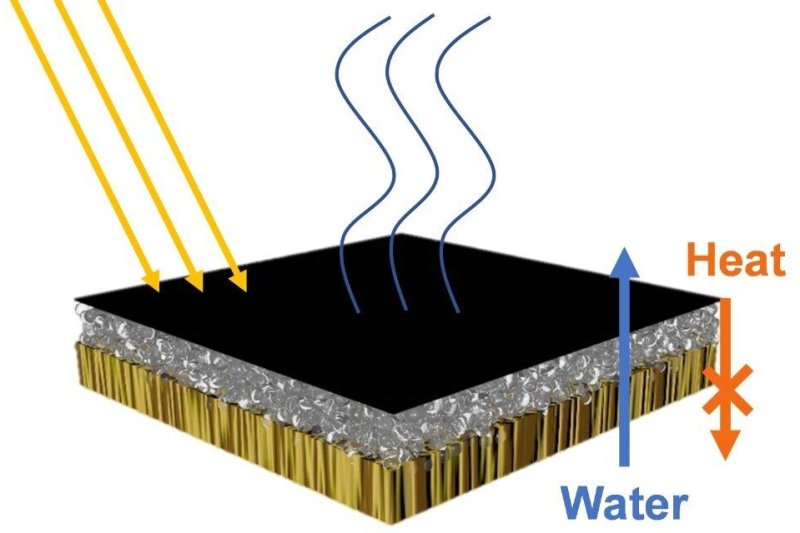The new water-purification device features a top layer of light-absorbing carbon nanotubes, a middle layer of insulating glass bubbles and a bottom layer water-transporting wood. Photo by Qing-Fang Guan, et al. / Nano Letters 2020
July 8 (UPI) -- Engineers have developed a new wood-based steam generator that can purify water using bacteria-produced nanomaterials and the sun's energy.
Solar steam generators, which use the sun's energy to separate water molecules from contaminants via evaporation, aren't new, but the quest to make the technology as efficient as possible is never-ending.
When working to improve upon solar steam generators, scientists can focus one or more sources of inefficiencies: light absorption, heat management, water transport or evaporation.
Researchers at the University of Science and Technology of China developed a water purification device that improves on all four processes.
The team of scientists selected wood for its sustainability, and because its porosity allows for rapid water transport. To bind the device's wood layers, researchers relied on long cellulose nanofibers, which are produced by bacteria.
After sterilizing the wood, scientists applied the bacteria strain Gluconacetobacter xylinus and allowed it to ferment on the back of a block of wood. Next, researchers sprayed on a layer of aerosolized glass bubbles, an excellent insulator.
"The glass bubbles became embedded in the cellulose nanofibers produced by the bacteria, forming a hydrogel," researchers explained in a news release.
The cellulose nanofibers formed by the bacteria worked to bind together layers of the device together. To complete the device's light absorbing top layer, researchers applied carbon nanotubes, which became intertwined with the cellulose nanofibers.
The device -- detailed Wednesday in the journal Nano Letters -- works by pulling and filtering water up throw the wood layers to the light absorbing top layer, which is heated by the sun. The purified water evaporates and is collected and condensed above and funneled to a holding tank.
The carbon nanotubes and cellulose nanofibers lower the energy required for water vaporization, while the layer of glass bubbles ensure the sun's energy doesn't dissipate down through the wood layers.
In addition to being constructed using relatively cheap and sustainable materials, the device boasts a higher evaporation rate and greater efficiency than most current solar steam generators.
The simple technology could be used to purify seawater, as well as contaminated lake and river water, in remote locations and in parts of the developing world.















